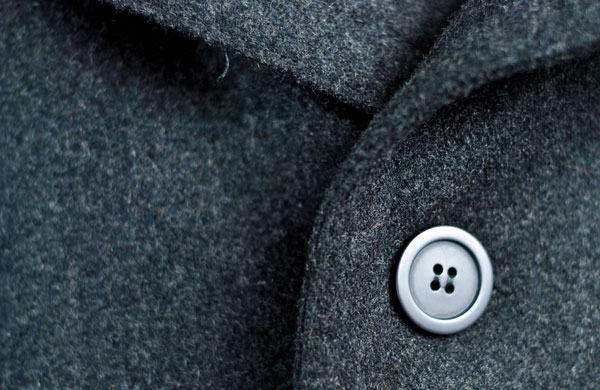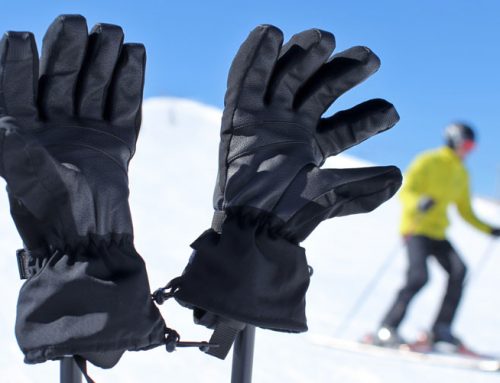Wouldn’t it be nice if summer lasted forever? An endless summer is the thing of dreams for most of us, alas the bitter cold still comes for us when the leaves start to fall. It’s never a bad time to start thinking about what winter jacket will keep you warm on those cold days. What is the best material to keep you warm in your jacket, and fit your needs perfectly this winter? Let’s go on a jacket journey.
Some people need a jacket for work on those cold days in a freezer, some for racing down the slopes, others enjoying long magnificent hikes, or maybe just for a stroll whilst looking stylish. Different materials will suit the needs of different people. Now let’s get each and every one of you into the perfect layer of warmth.
Table of Contents
Jacket Components
Shell
The shell is the outer layer of a jacket. It is the material that is “on show”, and it is the first line of defense against the elements. Shell’s come in different materials, styles, and colors.
Lining
A jacket’s lining provides the inner layer of warmth, trapping the heat our bodies generate close to us, and keeping the cold out. It also helps keep the jacket’s shape. It is typically made of soft material, so you don’t have the uncomfortable feeling of the shell material directly on your skin. Lining weight varies from lightweight to heavyweight depending on your needs, and is usually made from polyester, silk, or satin, or some sort of material mixture.
Filling
The part of jackets which provide the most warmth are the filling. An empty shell, or one with a thin insulation and minimal filling can keep you warm in some climates, but for legitimate warmth in the cold (- degrees weather), you want some solid filling (e.g., duck or down feathers).
Jacket fillings are the layer between the shell and the lining. They can be made of materials that are light (synthetic down), or heavier (polyester). Down filling (duck or goose feathers) will keep you very warm, but it is not waterproof. You can waterproof down jackets, but it is not always effective. Synthetic down is more waterproof as it’s made from polyester fibers, it just isn’t quite as warm. There are some brands that make a mixture of synthetic down and real down for fillings.
Jacket Materials
Now we’ve touched on the parts of jackets, let’s look at their materials.
Wool/Wool Blends
Are beautiful for a heavier overcoat. It is heavy, and a natural material. It can be made into different types of jackets, such as an overcoat to a suit, or a peacoat, even a shawl. If wool is blended it can be made into a lighter jacket, and even softer.

When choosing a wool jacket you want to pay close attention to the quality of the wool, as generally the finer the wool quality = a better jacket/coat.
A wool blend is a mixture of wool and polyester (or acrylic). They can also be blended with other natural materials like cashmere or angora to increase the softness of a product.
The color of a wool jacket will be decided by the quality of the wool. If a wool is heavy it is usually darker. This makes it easier to dye with dark colors (e.g., blue, black, grey), as the fabric is so dense, it does not hold light colors well. So for lighter colored wool jackets, you’ll typically find more wool blends, and as such you see more vibrant colors in scarves or more upscale blended wool coats.
If you want a waterproof jacket, then wool probably isn’t for you. You’ll only be dry cleaning wool coats. You want to make sure your wool coast has quality lining, such as a nice polyester. A nice lining will increase the comfort of wool jackets, but also protect you from the feeling of wet wool if you do get caught out in the rain.
Wool is great at keeping you warm, and can look stylish, however it is not waterproof and can be an uncomfortable material.
Leather (and fake leather)

The quality of leather can be determined by the different layers that the material comes in. Top layers of leather are made of the highest quality, they will be the most waterproof, however they are also the most prone to staining because of how pure they are. Middle layers of leather are more coarse than top layers, and won’t offer as much breathability or waterproofing and top quality layers. Bottom layers are softer and have a fuzzy texture, which is used to produce suede. Suede is nie to touch, however it is not durable, and won’t keep you warm. You cannot machine wash leathers, so similar to wool you’ll be dry cleaning your leather jackets.
Fake (or faux) leather is a nice alternative to rela leather if you cannot afford real leather, or if you are vegan or vegetarian, and still like the look. It is made using a blend of plastic and polyurethane, with polyester weaved into the jacket to increase its flexibility. Due to its materials faux leather is waterproof. Dry cleaning the jacket will help maintain its shape, but they are machine washable (follow manufacturer guidelines carefully). You cannot put either faux leather or suede in a dryer, as they are plastic, and we don’t want it to melt! These jackets are not breathable, so if you live in a hot climate, or want some breathability hiking, steer clear of leather or faux leather jackets.
Colors for real leather are generally darker, with faux leather you can get products in most colors, including bright and vibrant ones!
Polyester
Polyester in simplistic terms, is a material made from soft plastic. It has a polymer base, which properties make it an incredibly durable and versatile material. Polyester can be used as a blend in different jacket materials to add pliability, waterproofing and more. Jackets can also be made using 100% polyester, with linings, fillings, and shells all being made of polyester. The majority of heated jackets choose either polyester or nylon as their material of choice due to their durability at handling extreme conditions (snow, rain, heat, etc.).
Polyester jackets have great water-resistant qualities, so they are often made with wet weather in mind. Any trench coat, winter jacket/, ski jacket, or windbreaker made for wet weather will likely include polyester in some form. It is a lightweight material, which generally fits well to the person wearing the jacket.
Unfortunately strictly polyester jackets won’t provide the strongest protection as they are on the lighter side. So to enhance their wind resistance, you will want a heavier material included, such as wool, to create a water-resistant, and wind-resistant blend.
Polyester comes in almost any color, because it works nicely with almost any dye. Most manufacturers still use muted colors, as they are the preferred choice of outerwear. Polyester jackets are often machine washable, however it is recommended to dry-clean them. Do not put polyester jackets in the dryer, as this will cause it to shrink.
Nylon
Nylon is a similar material to polyester in that it can be used as a shell and a liner, and that is a soft flexible plastic. The main difference between polyester and nylon is that nylon is stronger. Polyester does dry faster, and generally is longer lasting. Nylon jackets will typically come in more muted colors, this isn’t due to choice (like polyester), nylon just doesn’t hold dyes as well as polyester. If you find a nylon jacket with bright colors, it is probably a mixture of nylon and polyester. Some great heated jackets are made using heated jackets as their main material.
You can wash nylon in the washing machine, however, it should not be put in the dryer (plastic fiber).
Polyurethane
Is also a polymer/plastic fiber which is used in jackets. It is water-resistant and often is the material for cheaper trench coats. Polyurethane will protect against the rain and snow well, but does not hold up great against the wind. They are ideal for more temperate climates.
These jackets are usually made with acrylic or polyester lining. This is to make polyurethane jackets more comfortable on the skin. These jackets are not breathable, but they do come in a variety of colors (red and yellow especially). Like the previous two materials, they are machine washable, but not suitable to go in the dryer.
Get out there!
And find yourself a jacket made of the perfect material for your needs. Eahc jacket material will have its own unique benefits, shop with confidence in knowing that the material you choose will suit your needs!



